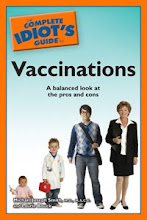In an NPR article about the New Orleans workshop, Richard Knox pointed out that the effect of oil spills on human health has not been studied much, despite a history of several dozen major spills over the past 50 years. Knox explained that:
Only about a quarter of [the oil spills] have been studied for toxic effects on humans. And the studies that have been done are often small and without comparison between groups of oil-exposed and unexposed people. In addition, none has so far looked at long-term consequences of exposure, such as cancer incidence.As a result, there are a lot more questions than answers about the short- and long-term health impact of the oil spill. The main health concerns for humans include an oil spill's impact on air quality, the health impact of direct contact with oil and substances used to clean up the oil, and the safety of consuming fish/shellfish caught in the area. Knox also wrote that some researchers believe that children might be especially susceptible to health problems from exposure the the oil.
A CDC fact sheet about the spill warns that particulate matter in the air from burning oil might harm people with chronic medical conditions, discourages recreational swimming in contaminated areas, and suggests avoiding contact with oil spill dispersants used to treat the oil slick.
Knox wrote that previous large oil spills, such as the Exxon Valdez oil tanker spill in Alaska in 1989, have also had mental health consequences. After the 1989 spill, researchers found increases in problems such as post-traumatic stress disorder and anxiety among residents in the affected areas.
The BP oil spill is also harming local economies, adding to the stresses on Gulf Coast residents. Louisiana Governor Bobby Jindal told the Miami Herald today that Gulf waters off his state provide 30% of U.S. seafood and bring in $3 billion per year in commercial and recreational fishing.
To see the BP oil spill superimposed over the area where you live and get a sense of its scale, visit the interactive map www.ifitwasmyhome.com. The map is based on current National Oceanic and Atmospheric Administration (NOAA) data about the spill. Or you can go straight to NOAA to see where the oil is right now or learn more about previous large oil spills in the Gulf.



